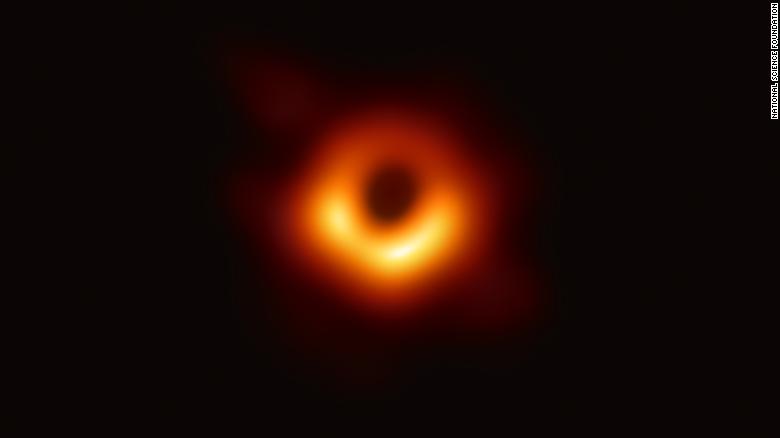Center Co-Director Thomas Greve gives IDA Lecture on the EHT Black Hole picture

With a lecture given Monday the 27th of May, senior researcher Thomas Greve, Head of the Cosmic Dawn Center at DTU - Space, took the crowd on an amazing journey through space and time along with Einstein, Pōwehi and the Event Horizon Telescope (EHT), delving deeper into the newly revealed picture of a black hole, along with the technology and astrophysical challenges behind the photo.
On April 10, 2019 - it was announced that a black hole had been depicted for the first time. Its location was in the Messier 87 galaxy, which is located at 55 million light years from Earth.
Thomas Greve explained how the photo was obtained using the Event Horizon Telescope - network of terrestrial telescopes, which is spread across four continents and. It is a major breakthrough for astronomy, as it was predicted and has been assumed for very long that black holes exist and could in principle be observed, but it has only happened now. The picture shows a clear ring around the black hole, where light 'bends', thereby clearly showing its contour.
EHT (Event Horizon Telescope) is a unique international network of terrestrial radio telescopes spread across four continents, specially designed to take black hole images. And it is with this equipment that we have obtained the first picture of a supermassive black hole's shadow.
The image of the black hole - in the form of the observable outline of it - is based on observations of radio waves using the EHT network, which is then converted into a visual image. Previously, it was only possible to see the surroundings of black holes by means of indirect observations and simulations.
The EHT network of terrestrial telescopes together make up an Earth-sized telescope, opening up fundamentally new ways in which astronomers can study supermassive black holes.
The telescopes that have contributed to the discovery of the black hole in the M87 are ALMA, APEX, IRAM 30-meter telescope, James Clerk Maxwell Telescope, Large Millimeter Telescope, Submillimeter Array, Submillimeter Telescope, and South Pole Telescope, of which DAWN work with a number. The data analysis was primarily performed with supercomputers at the German Max Planck Institute for Radio Astronomy and MIT Haystack Observatory in the United States.
The 2-hour seminar was livestreamed, and had over a hundred spectators along with the people present in the lecture hall.
The Cosmic Dawn Center is a Center of Excellence supported by the Danish National Research Foundation.
The IDA talk website can be found here.
